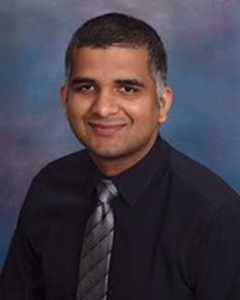Program Information
Extension of a Real-Time Skin Dose Tracking System to Include Pediatric Fluoroscopic Cardiac Procedures
V Rana*, D Bednarek, J Wu, S Rudin, SUNY, University at Buffalo, Buffalo, NY,
SU-E-I-25 Sunday 3:00PM - 6:00PM Room: Exhibit HallPurpose: To develop pediatric graphic models for a real-time skin dose-tracking system (DTS) and to verify the accuracy of dose and dose-rate determination with these models for cardiac projections.
Methods:A system has been developed to track skin dose during fluoroscopic interventional procedures and to provide a graphic representation of the cumulative dose distribution in real time. Accurate operation of the DTS has been verified for adult patient graphic models. To extend the application of this software to pediatric procedures, a series of 3D pediatric patient graphic models has been developed with varying heights ranging from 60 to 128 cm and with three weight ranges for each height. An open-source software application was used for graphic development while a commercial software package was used to pose the models with arms up or down. The appropriate graphic model is selected by the operator at the beginning of the procedure to closely match the patient. To verify correct dose calculation for these models, exposures were made for typical cardiac projections using a water-filled phantom with AP and lateral dimensions of 12 and 19 cm, respectively, corresponding to the torso of a 20 kg child. Dose (rate) was measured at the center of the field using a 6 cc ionization chamber and the readings compared to those calculated by the DTS.
Results:The DTS displayed values of cumulative skin dose and of dose rate agreed with the values measured with an ionization chamber within 2 percent over a range of RAO/LAO and CRA/CAU projections on a cardiac C-arm unit.
Conclusion:The patient model size range for the DTS software has been extended to include pediatric patients down to 60 cm in height and 12 kg in weight and the DTS has been shown to be able to accurately track the skin dose for such models.
Funding Support, Disclosures, and Conflict of Interest: Research supported in part by Toshiba Medical Systems and NIH Grant 2R01EB002873.
Contact Email:


